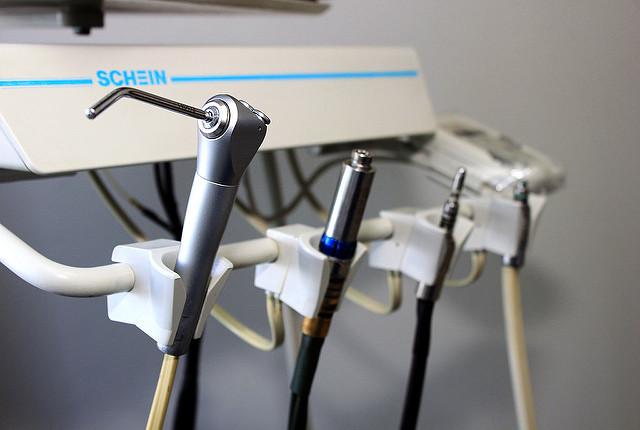
A trip to the dentist usually comes with a lot of uncertainty. Is this going to hurt? How much is this visit going to cost? Will they find any cavities? Can they tell I haven’t been flossing regularly? What on earth are all of these tools and machines for? Well, the only way to find out answers is to visit your dentist, but your visit typically doesn’t include an explanation of every tool we use. If you’re curious, we’ve provided a guide to some of the most commonly used tools and machines that you may encounter on your next trip to the dentist.
You’ve heard the saying “all that glitters is not gold,” and that rings true with the shiny silver instruments that your dentist uses throughout your visit. As you’re lying back in the dentist’s chair staring at the ceiling, you inevitably wonder why they need so many different silver tools to get this job done. Believe it or not, each one is designed for specific use and all play vital roles in your dental checkup.
The tool your hygienist likely uses the most is called a sickle scaler. This tool has a sharp, curved end and is used to scrape plaque and tartar from the surfaces of your teeth.
You might also be familiar with the mirrored tool your dentist frequently uses, also known as a mouth mirror. This tool isn’t much of a mystery; it’s used to see the angles of your mouth that your dentist can’t see just by looking.
Then there’s the famous “spit sucker,” which is more formally known in the dental industry as a disposable saliva ejector. This device provides suction to remove any saliva, blood, or debris from your mouth throughout your dental procedure.
Another commonly used tool in a dental checkup is an explorer, which is what your dentist uses to poke your teeth. There is actually a method to this madness; this process is used to search for cavities.
Aside from the tools used to clean and examine your teeth, you may come in contact with some intimidating technology during your dental visit. Have no fear; there is a purpose for this technology as well!
Your dentist may perform a set of dental X-rays during your visit. There are numerous types of X-rays, but the types you have likely experienced are occlusal, bitewing, and panoramic X-rays.
Occlusal X-rays are very common. They capture all of your teeth in one shot. During bitewing X-rays, your dentist will ask you to bite on a “T” shaped device while the X-ray is being taken. This is so your dentist can examine how the crowns of your teeth match up. This X-ray also checks for interdental cavities.
If you’ve had your wisdom teeth removed, you’ve probably experienced a panoramic X-ray. This machine revolves around your entire head, taking the X-ray as it goes.
If you encounter any of these tools on your next visit to the dentist, don’t worry! They are intended to help, not hurt you. None of the tools used by dentists should be a cause of worry. If you have questions about the tools your dental hygienist uses throughout your procedure, don’t be afraid to ask. At the Dental Care Center, we strive to ensure the comfort and ease of our patients throughout their dental procedures. Make your appointment today!